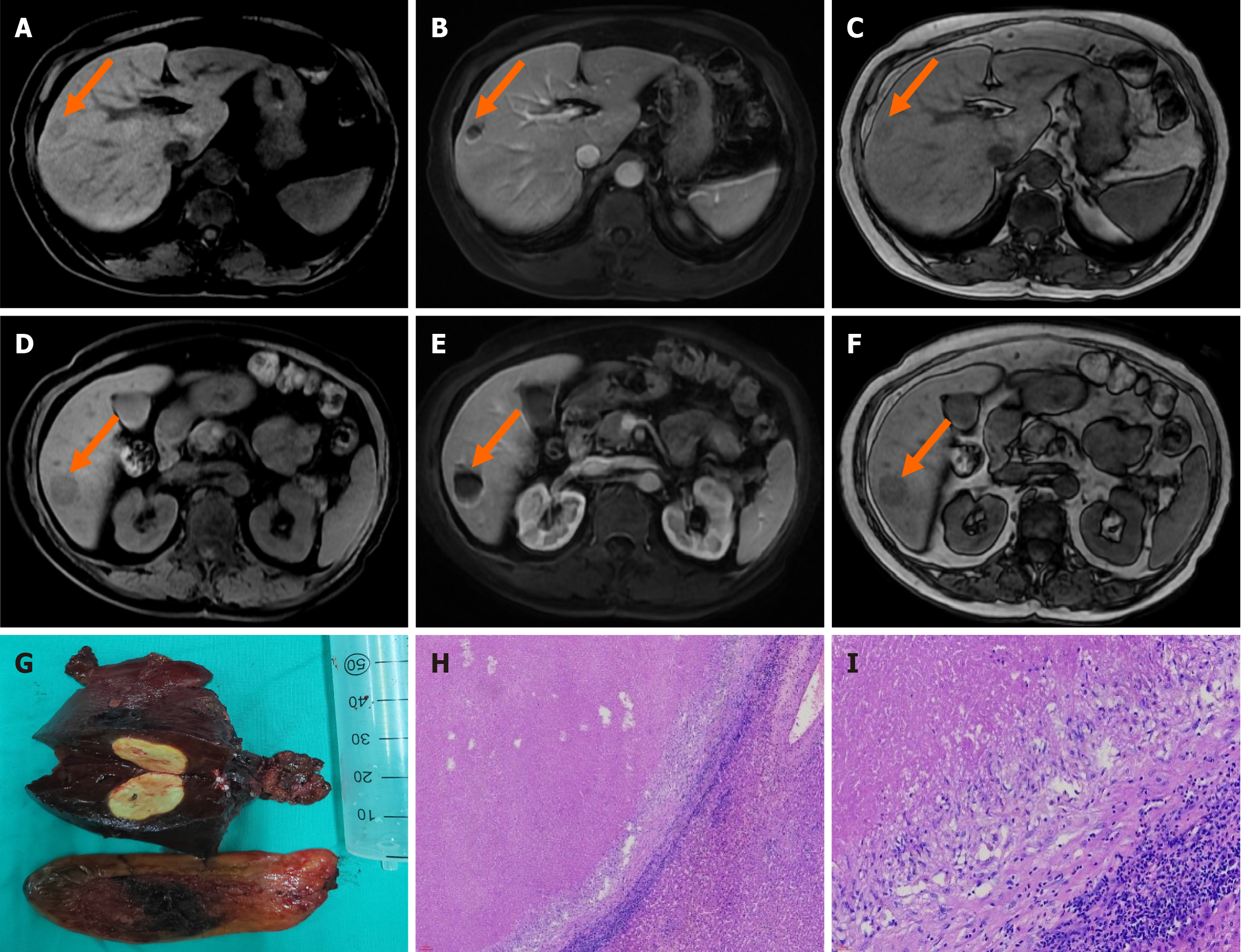Copyright
©The Author(s) 2024.
World J Gastrointest Oncol. Oct 15, 2024; 16(10): 4264-4273
Published online Oct 15, 2024. doi: 10.4251/wjgo.v16.i10.4264
Published online Oct 15, 2024. doi: 10.4251/wjgo.v16.i10.4264
Figure 4 Magnetic resonance imaging, specimen and pathological results of single necrotic nodule in the liver.
A: On T1-weighted magnetic resonance imaging (MRI), a nodular isointense to slightly hyperintense signal is observed in segment S8 of the liver (arrow); B: During the arterial phase of MRI, the lesion in segment S8 shows a progressive and irregular peripheral enhancement pattern (arrow); C: In the hepatobiliary phase, the lesion in segment S8 exhibits a hypointense signal (arrow); D: On T1-weighted MRI, a nodular isointense to slightly hyperintense signal is observed in segment S6 of the liver (arrow); E: During the arterial phase of MRI contrast enhancement, the lesion in segment S6 demonstrates a ring-like enhancement (arrow); F: In the hepatobiliary phase, the lesion in segment S6 shows a hypointense signal (arrow); G: Specimens of the tumor in segment S6 of the liver and the gallbladder; H: Hematoxylin and eosin (HE) staining 100 ×; I: HE staining 400 ×.
- Citation: Zhao Y, Bie YK, Zhang GY, Feng YB, Wang F. Rare and lacking typical clinical symptoms of liver tumors: Four case reports. World J Gastrointest Oncol 2024; 16(10): 4264-4273
- URL: https://www.wjgnet.com/1948-5204/full/v16/i10/4264.htm
- DOI: https://dx.doi.org/10.4251/wjgo.v16.i10.4264









